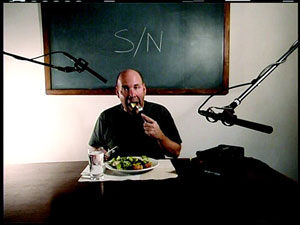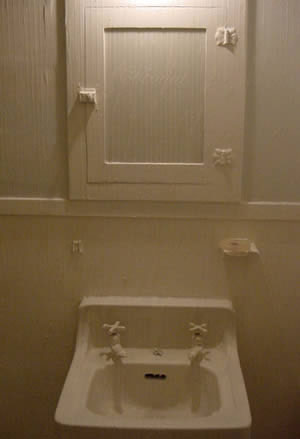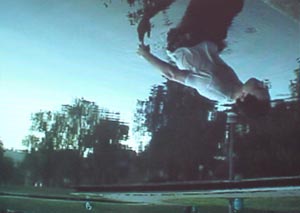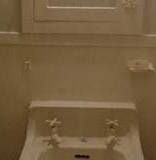These days the idea of shelter lies on the ephemeral end of architecture. It evokes the primal need for protection, from the elements or invaders.
In contemporary life, shelter is a term most commonly used at points of natural or social disasters, giving aid to refugees or the homeless. In keeping with this, Gimmie Shelter at Conduit Gallery assembles a group of artists that evoke the transitory nature of home.
Kyle Wadsworth‘s inflatable plastic tree is found on the floor, lying on its side. Is this the home of some unfortunate woodpecker, or some other creature from the forests of Snow White or Bambi? The cartoonish detailing and adamant sense of pop demand such childlike associations. With a more conceptual turn, we might ask how a tree relates to shelter, especially a plastic inflatable tree with barren branches. This wouldn’t shield us from a rainstorm or serve as lumber to construct a shack. But, as you might expect, real shelter is not always the subject of this show.
Sally Packard has populated the walls of the gallery with elaborately stitched, worm-like forms that frame a doorway as well as the connections between wall, floor and ceiling. The reference here to shelter is not the piece itself, but rather the architectural form of the gallery. Or maybe these forms are pod-like shelters, cocoons for developing pupae? Judging from the colorful kitsch of their surfaces and material, these insects would emerge as fabulous winged creatures right out of William Blake or Henry Darger.
Sitting with regal humility in the corner of the second gallery is a city of puffed-up fabric buildings connected by ladders of string, the creation of Lily Hanson. Each structure measures four to six inches at the most. They jut out from the walls or stand on tiny stilts on the floor. Their surfaces breathe like birds — the swelling red of a robin’s breast, the gentle yellow curve of a finch. As a city it is empty. There is no one there. But perhaps, considering the personified presence of the buildings, this city is inhabited by itself.
At the other side of the gallery stands an improvised structure made of aluminum studs and raw drywall. As you weave your way inside, you are suddenly struck by hundreds of tiny portraits. On closer inspection, they turn out to be the same person, the artist Karen Davenport. All that we see is her face, which sways in blurred surrender, eyes closed and mouth open. She photographed herself in this space using the same light source that hovers above – a single hanging light bulb. Like Philip Guston‘s visions of drawing in his childhood closet or Roni Horn‘s portraits of clowns, the human presence in this space is at once unsettling and mesmerizing.
Robert Boland wraps up the show with a seven-minute projected video. The camera has been turned on its head and through this inverted lens we see the sliver of a pond’s edge. Boland emerges from the edge of the frame and slowly lowers himself into the water. Once he is completely submerged, we are left with the reflection of trees and sky that shimmer on the water’s surface. Every once in a while his nose or mouth bobs up, breaking through this picturesque nature scene to come up for air. Each time, he descends again, hovering just under the surface. As he emerges, and gets out of the water, tracing the steps of his entrance, the reflection of his body provides shapes and shadows that provide the drama for this quiet elegy. Even though the action is anything but ordinary, its extremity allows us to focus on the everyday. I couldn’t help but thinking of a similar moment in Warhol’s film of a haircut.
For Boland, water can act as shelter, somehow inverting the way that we might think of the need for protection. But his human presence, like that of Davenport, gives us a sense of scale to measure these spaces. For these two artists, the human presence is psychologically loaded, unlike the generic human figures inserted into architectural plans. Maybe shelter is an idea of place that is not planned—it is found or stumbled upon by the one who builds and lives under its roof. But it is also found by another human presence, the visitor.
Images courtesy Conduit Gallery.
Noah Simblist is an artist and writer living in Dallas.






